As an Amazon Associate I earn from qualifying purchases.
Mexican chorizo is very different from its Spanish cousin. Mexican chorizo is softer, spicier and more floral than Spanish chorizo.
Here’s how to make homemade chorizo with pork, beef or pretty much any wild game animal.
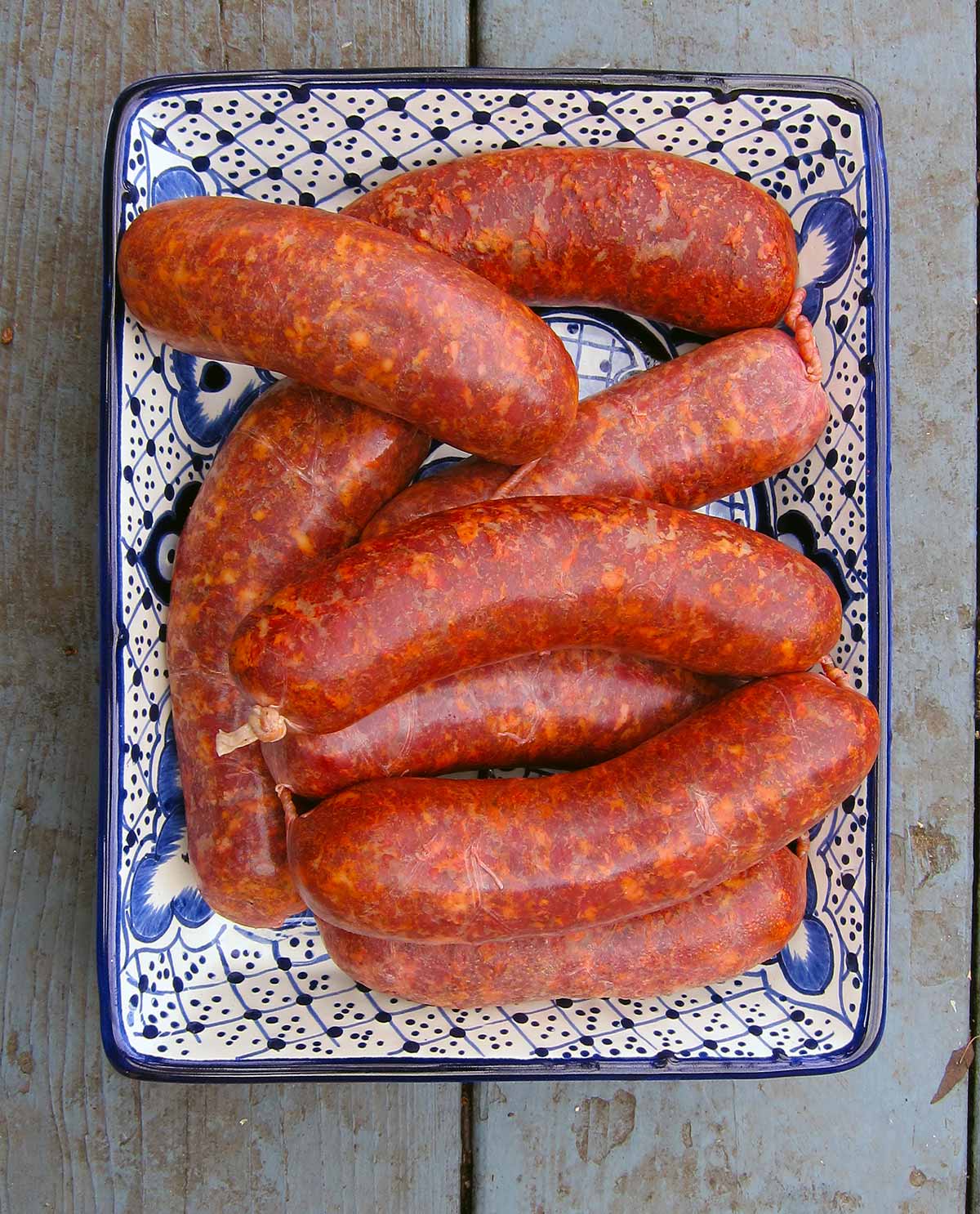
Making authentic Mexican chorizo is tricky if you don’t have some of the ingredients, but even if you leave some out, it’ll still be good. You should also know that there is no “One True” chorizo recipe– each cook has his or her own variation.
Many store-bought chorizo recipes use a combination of beef and pork, but I find it easier to use just one meat. I’ve done this with domestic pork, wild boar, venison and even bear meat. All work well.
If you can’t find all of the ingredients, know that only a few are critical to a good Mexican chorizo: Achiote paste, which is available at any Mexican market, or you can buy achiote online. And sometimes you can find annatto seed, which is the primary ingredient in achiote. If you can find that, grind the seeds in a sturdy spice grinder.
All is not lost if you can’t get your hands on achiote paste or ground annatto seeds. I’ve seen versions of Mexican chorizo from Baja California and Sonora that don’t use it. A great substitution is to rehydrate guajillo chiles, which are bright red and not too picante, then puree them. For this recipe you’d want maybe 3 guajillos, seeded and stemmed, rehydrated and pureed with about 1 cup of water.
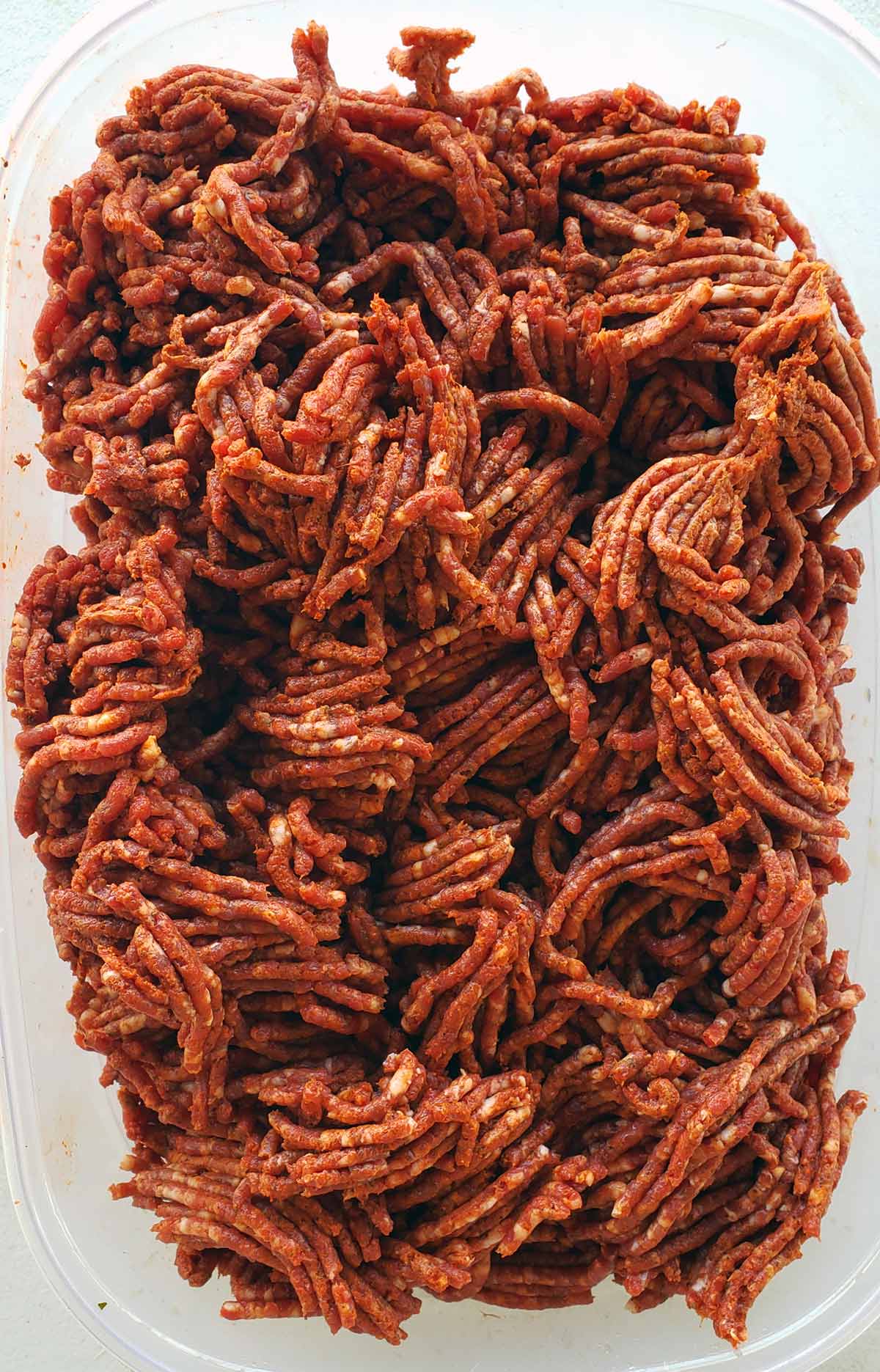
Another tip is that Mexican oregano is different from Mediterranean oregano. They taste different, but either works. Chipotle and ancho powders rock, but are not 100 percent necessary.
You do need cayenne and some other chile powder, but these are easily available in Latin markets — or you can grind dried chiles yourself, which is what I do, using a spice grinder.
Hog casings are available at any butcher shop or large supermarket (you’ll need to ask for them there), or you can buy hog casings online.
Mostly you will use Mexican chorizo uncased, however, and mostly I make large batches of this sausage and vacuum seal them. Chorizo has endless uses: In chilaquiles, as an empanada filling, in a burrito, on a taco, as a base for chili, etc.
Also know that there are versions of chorizo from outside Mexico, notably an Argentine version that is great as a sandwich. Mexico also has a green chorizo, from the city of Toluca, and a thinner sausage that is similar to chorizo called longaniza.
How to Use Your Chorizo
Mostly we eat Mexican chorizo uncased and mixed with eggs in breakfast burritos. This is a fine use. Other options would be in Mexican empanadas, in chilaquiles, mixed in with beans, in tacos, as a base for chili, or hell, top a big ole’ plate of nachos with it!
Mexican Chorizo Recipe
Ingredients
- 4 pounds pork, wild pig or bear
- 1 pound pork fat
- 35 grams kosher salt, about 3 tablespoons
- 15 grams sugar, about 1 tablespoon
- 6 garlic cloves, minced
- 6 grams Mexican oregano, about 2 tablespoons
- 5 grams ground cumin, about 2 teaspoons
- 3 grams chipotle powder (1 tsp) (optional)
- 5 grams cayenne, 1 tablespoon
- 28 grams pasilla or ancho chile powder , about 3 tablespoons
- 2 tablespoons achiote paste (annato)
- 1/2 cup ice water (See headnotes)
- hog casings
Instructions
- Cut the meat and fat into chunks that will fit into your meat grinder. Combine the salt, sugar and all the dry spices (except for the achiote paste) with the meat and fat, mix well with your hands and chill it until it's almost frozen by putting it in the freezer for an hour or so.
- Take out some hog casings and set in a bowl of very warm water. Mix the ice water with the achiote paste and chill it in the fridge.
- Grind the meat mixture through your meat grinder (you can use a food processor in a pinch, but you will not get a fine texture), using the fine die, about 4.5 mm. If your room is warm, set the bowl for the ground meat into another bowl of ice to keep it cold. Make sure the meat mixture is very cold before moving on to the next step: You want it between 27°F and 35°F.
- Add the water-achiote mixture and mix thoroughly either using a Kitchenaid on low for 60 to 90 seconds or with your (very clean) hands. This is important to get the sausage to bind properly. Once it is mixed well, put it back in the fridge and clean up.
- Stuff the sausage into the casings all at once. Twist off links by pinching the sausage down and twisting it around several times; do every other link and you will only have to twist in one direction. Or you could tie them off with butcher's string.
- Hang the sausages in a cool place for up to overnight (the colder it is, the longer you can hang them). If it is warm out, hang for just one hour. Once they have dried a bit, put in the fridge until needed. They will keep for at least a week in the fridge. If you are freezing the sausages, wait a day before doing so. This will tighten up the sausages and help them keep their shape in the deep-freeze.
Nutrition
Nutrition information is automatically calculated, so should only be used as an approximation.

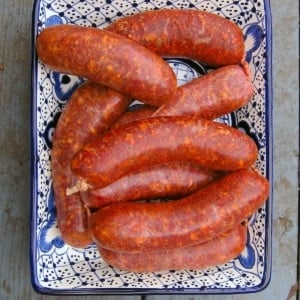


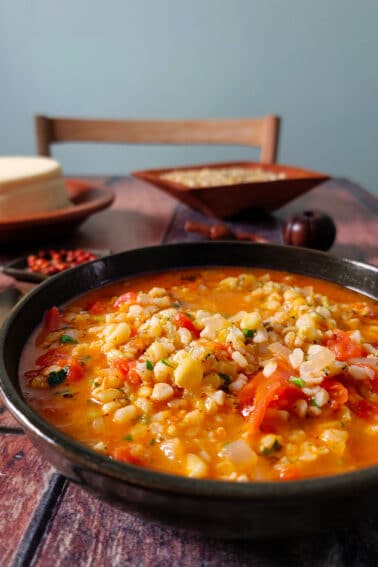
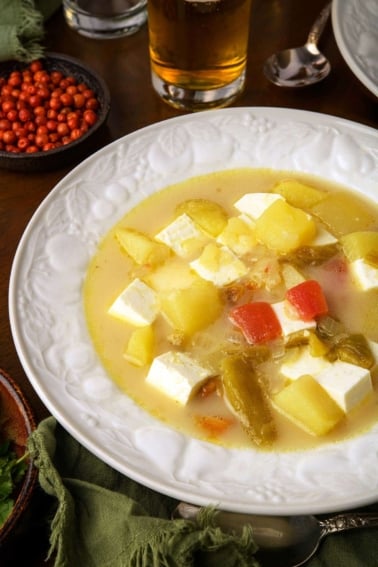
This made an awesome chorizo. We made a single batch using venison and wild boar, no extra fat. We like a lean chorizo. (I know, what’s the fun in that?!?) No casing for us. Chorizo and egg tacos for breakfast tomorrow!
I used this recipe to make venison sausage for the first time ever and something seems off with the texture. I mixed in 4 lbs venison with 1 lb of pork belly and followed the recipe. I made especially sure to keep the meat very, very cold and I also hung the casings outside overnight in temps around 38*. The flavor is pretty good but the texture is very soft, very fine, and there is no “bite” to the chorizo. Is this normal? It almost has the texture of one of those “meatless meats” and it’s just a bit too soft, almost mealy. It holds together fine but there is just something that’s off about the texture. Any ideas what I may have done wrong or am I just going crazy? I also wish the sausage was a bit more juicy. Could it be because I used pork belly and not pure pork fat that it’s not super juicy?
Travis: That is intentional. Mexican chorizo is not supposed to be eaten in the casing. It’s supposed to be very loose and soft, as it is always cooked as a sort of base for other things.
Hi Hank
On the Mexican Chorizo, can it be smoked in a pellet smoker. If it can what temperature and time, I have a treager 1300 pellet smoker.
Gary: You can, but remember that Mexican chorizo is a soft sausage, so while it’ll be smoky, it won’t be firm like a brat. That said, I usually smoke links at about 200F until they hit an interior of 150F, which is 2 to 4 hours. I would suggest mesquite for the wood here.
I’ve been looking for a good chorizo recipe for a while, this is exactly what I was looking for. We didn’t have any achiote paste so we made a substitute paste using smoked paprika, going to have to order some paste or annatto seeds. We did half a batch with elk and fat from a buddies pig and left the sausage loose for making breakfast burritos with yard bird eggs. Next batch we will double the recipe.
Awesome flavor. I did uncased because I love Chorizo, eggs and beans. This is soooo much better than store bought. Well worth the time.
This recipe caught my eye a while ago and have been waiting for the time to make it. What better time than national lockdown. I couldn’t find pork fat in the store due to the shortages but I just subbed in 1.5 lbs of pork belly and cut the lean venison down a bit. My 2 1/2 year old son loved mixing it up by hand with me and watched me grind and bag it, didn’t bother with stuffing we use chorizo loose a lot in recipes.
Right after we were done we cooked up a piece to share, spot on. Thanks Hank. The lock down has me finally getting around to some of these.
The only down side is I didn’t double or quadruple the recipe
I’m doing this tomorrow with a feral sow I shot a week ago. Going to try to double up and make a 10lb batch. Thanks for your review.
Which pork meat is best? Considering the addition of fat. Pork shoulder..pork butt..or tenderloin?
Annie: I would use pork shoulder.
Good to know! Thanks I just put in the order for more fat from my butcher.
Have you ever tried (or recommend) making this with duck?
Tyler: Yes, it’s really good, but you will want to mix in about 2 pounds of fatty pork shoulder to every 3 pounds of lean duck meat.
Awesome chorizo. Makes the store-bought stuff taste like catfish bait.
Hi Hank
I was going use your recipe with fresh ground pork and and stuff into links. I wanted to make them about 1″dia and 6″ long
Gary
What happened to the tequila? Your old recipe had an oz or two of it in there.
Kentucky: I removed it. It was messing with the flavor and it’s not used in authentic chorizo.
Hi Hank
I was going use your recipe with fresh ground pork and and stuff into links. I wanted to make them about 1″dia and 6″ long
Gary
I am new to sausage making and only made sausage once so far. I made sweet Italian sausage using another recipe and instructions. I researched high and low to gain as much info as possible on the whole process of choosing casings, ingredients, equipment and techiques. I found you and your recipies and its exactly what I’m searching for. I am very surprised to learn all the different kinds of sausages that can be made. Your recipies are very creative and makes my mouth drool.
I am definitely going to try your sausage recipies and I have only one question. When you make sausage, I noticed that after you stuff and make the links, you say to hang them up to “dry” for an hour or overnight to let the seasoning in them come together. The sausage can be is refrigerated or freezed. Doesn’t the meat start to turn bad during this time frame? Isn’t is bad leave meat out at room temp for so long?
Tina: Nope. It takes a lot longer for meat to go bad than an hour or two at room temperature.
I have been looking for a good recipe for making chorizo dogs. This was perfect! I upped the recipe to 6lbs and made 24 links. Great flavor, easy recipe to follow. I added pepper flakes for half of the mix for added spice. I’ll be trying more of your recipes soon…
The chorizo recipe was easy to follow and the flavor was great. I made 24 links for the grill. I have been looking for a good recipe and this was perfect! I will be trying your other link recipes as well. Thanks for sharing!
Lacking a grinder, I wonder if I could cheat and just open up plain store sausage and then “chorizo-ify” it. Hmm…
If you have to take a short cut try and find a local farmer or butcher that will sell you ground pork… don’t use sausages from a grocery store ?
Thanks, Hank. But, chorizo without the vinegar? It’s a key ingredient!
Sharon: In many recipes, yes. But vinegar damages a sausage’s ability to bind to itself, and I wanted these to be tight links. If you don’t plan on casing it, use vinegar instead of water and tequila.
What does the tequila do? Is it just for flavor? I’m eyeing this recipe as my first sausage making attempt. Thanks!
Alison: It adds some flavor yes, but also moisture. If you want to skip it, sub in ice water.
Hank: Thanks for the quick reply! I hope to try a batch this weekend, and I’ll be sure to be back with a rating!
If you make the sausage without a casing, do you still leave it out overnight?
Kristofer: Nope, you don’t need to then. Good point!
I’m pretty new to sausage making, and still low on the learning curve of stuffing technique. But we’re persevering. For the chorizo recipe would you use 4# of fairly lean pork (or whatever meat) plus 1# fat? Or 4# normal pork shoulder plus 1# additional fat? Really enjoy your site and books. Thanks.
Stan: If you are using regular pork, the ideal is 5 pounds of fatty pork shoulder. I often call for the 4 pounds + 1 pound pure fat because I work with wild pigs a lot, which are often very lean. Ideally, though, I’d use fatty domestic pork shoulder.
This one turned out great! No wild pork in this one…this time. Thanks, Hank!